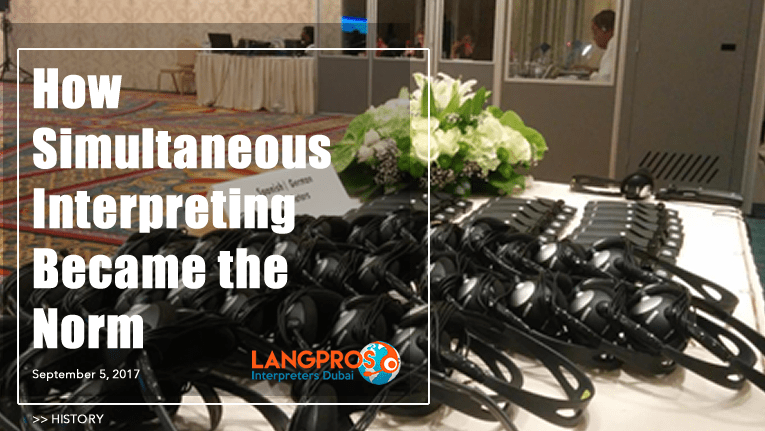Simultaneous interpreting, now a preferred mode of interpretation, was not always as popular. Prior to the invention of modern radio technology, chuchotage or whispered interpreting was the closest interpretation mode to simultaneous interpreting. Trained interpreters would sit or stand directly next to the listener, delivering the translation as the original orator spoke. Like simultaneous interpretation, whispered interpretation is delivered with limited or no time-delay. Yet where simultaneous interpretation can be broadcast to many listeners at once, only one listener can hear a whispered interpretation. So, despite the faster-pace of whispered interpreting, it was not the most prevalent mode of interpretation. Whispered interpretation was, and still is, used for small, intimate gatherings of people in which only a few participants required interpretation. For larger gatherings, such as speeches and conferences, consecutive interpretation was the favored mode as it could be heard by many listeners at once and required less skill from the interpreter.
The first use of simultaneous interpretation occurred in the 1920’s after the invention of the IBM Hushaphone Filene-Finley System. Using the Hushaphone, interpreters would sit in a quiet adjoining room from the conference or speech, speaking into a microphone that was connected to headsets in the other room via cables. This system faced backlash due to its technological issues and the hidden nature of the interpreters. High profile speakers dis-liked this system as they feared the interpreters would twist their words when not watched. Meanwhile, their consecutive interpreters expressed concern over being removed from the lime-light that accompanied translating for large audiences.
This all changed with the 1945 Nuremberg Trials. After World War Two, the Allied Powers of the United Kingdom, United States, France, and Russia held a military tribunal to prosecute the leaders of Nazi Germany. But there was one problem, the allied lawyers spoke English, French and Russian, and the defendants spoke German. The trials, already scheduled to take a year, needed a way to translate the proceedings into multiple languages without losing time. The answer, of course, was simultaneous interpreting. Interpreters at the Nuremburg trials worked in teams of twelve. At all times during the proceedings, each language combination would have three interpreters translating in the courtroom, three listening to the procedures, and three researching materials to provide better translations. The lawyers, witnesses, judges and defendants wore cable-connected headsets and could choose which language channel they listened to.
As simultaneous interpretation had not received much attention prior to these trials and as the allies needed to solve their language problems fast, most of the interpreters were not formally trained with the skills needed to translate on the spot. Today, this is not the case. After the success of simultaneous interpretation at the Nuremburg trials, the newly founded United Nations created a resolution that made simultaneous interpretation a permanent service at all UN events. With this resolution also came a new and extensive training system for simultaneous interpreters.
At Langpros, we offer services in whispered interpreting, consecutive interpreting and simultaneous interpreting. All of our interpreters are experienced, skilled, and professionally trained.
